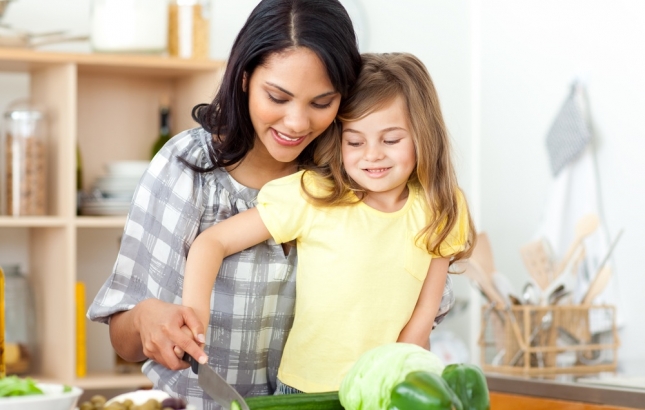
Kids in the Kitchen: Part One
Calling all mini Ramsey’s, Oliver’s, Lawson’s and Stewart’s! Who says kids can’t be chefs!? I am a passionate cook; some may even say kitchen and cooking obsessed! I’ve come to terms with the fact that I eat most of my salary and what some people find strange, is that the supermarket is one of my happy places. Spending hours in my kitchen is viewed as a blessing, not any form of chore or curse. I’m a firm believer in getting kids involved in both the activity of food shopping and food preparation…an idea that scares a lot off!
Calling all mini Ramsey’s, Oliver’s, Lawson’s and Stewart’s! Who says kids can’t be chefs!? I am a passionate cook; some may even say kitchen and cooking obsessed! I’ve come to terms with the fact that I eat most of my salary and what some people find strange, is that the supermarket is one of my happy places. Spending hours in my kitchen is viewed as a blessing, not any form of chore or curse. I’m a firm believer in getting kids involved in both the activity of food shopping and food preparation…an idea that scares a lot off!
Recent posts by Geva Maher
But here is the thing, there is a minimum requirement of three meals per day (+ snacks and baking), you will probably be feeding on average 2 – 6 mouths for each of those meals and hopefully have the aim to make these meals nutritious and natural rather than just cheap and easy. So having help, involvement and just some enthusiasm and appreciation for this huge daily accomplishment is vital! At KiwiOZ Childcare, we encourage our nanies and parents to get into the kitchen with the kids and regularly present the research benefits for kids such as;
- They practice fine motor skills while cutting, chopping, rolling, spooning and skewering
- Expands their vocabulary when talking about colours, textures, tastes and smells, varieties of fruits and vegetables, dishes, baking and cooking methods.
- Encourages experimentation with tastes, textures and colours developing a healthy interest in food
- Helps kids learn to plan and make decisions
- Encourages ‘Having a go’ and taking the risk to experience new tastes and flavours
- Improves Maths skills while measuring, counting, and estimating ingredients
- Working together: learning to take turns and sharing ideas
- Older children develop technologic skills learning to use the blender, toaster, sandwich maker and other kitchen appliances
- Encourages creativity by trying new things, experimenting with different combinations while making smoothies, kebabs etc.
- Encourages reading and literacy while looking through a recipe and making shopping lists
- Helping with cooking allows children to feel useful and empowered
Combine the above benefits with increasing our children’s knowledge of healthy and nutritious food choices and there is really no downside to turning our little one’s into little chef’s! The health of our children and future generations lies in the hands of parents and caregivers, and sadly so many of the health issues presenting in children are dietary and nutrition related:
- 1 in 3 children will get diabetes (1 in 2 among minorities)
- 1 in 3 will get some form of cancer
- 70% of kids by the age 12 already have the beginning stages of hardening of the arteries
- Diseases like Alzheimers are starting to effect people in their 30's & 40's
- For the first time in 200 years kids will live shorter lives than their parents
- The average daily intake of sugar is 76 grams or 304 teaspoons (compare that to 20 years ago 42 grams, and 50 years ago 19 grams)
**Statistics taken from Angela Garrison, Change your food Change your Future.
For some inspiration (or admiration) just look at Junior Masterchef Australia, which has incredibly talented children and teenagers preparing meals and enjoying it! This is the real aim when getting children in the kitchen… getting them to have fun learning how to cook and understanding why we make the food choices we do. So how can you make the kitchen a fun area? Easy, SHARE IT! Designate a drawer, shelf or area that is your child’s station and get them their own set of measuring utensils and other equipment (egg beater, spatula, etc). Get matching aprons or even have some fun with a chef hat! Have recipe books readily available, of course your own adult supplies but also some children’s cook books or magazines… the more colours and pictures, the more inspiration for them! And a winning tip that I always use is to celebrate the creation by taking a photo of the end product. Often this will lead to showing Mummy, Daddy, or siblings who weren’t there for the cooking party and children love taking pride and sharing what they’ve achieved.
Stay tuned for ‘Kids In The Kitchen: Part Two’ where I will be talking about common foods and ingredients found in family homes and the truth about their health value (or lack thereof).
Geva x



